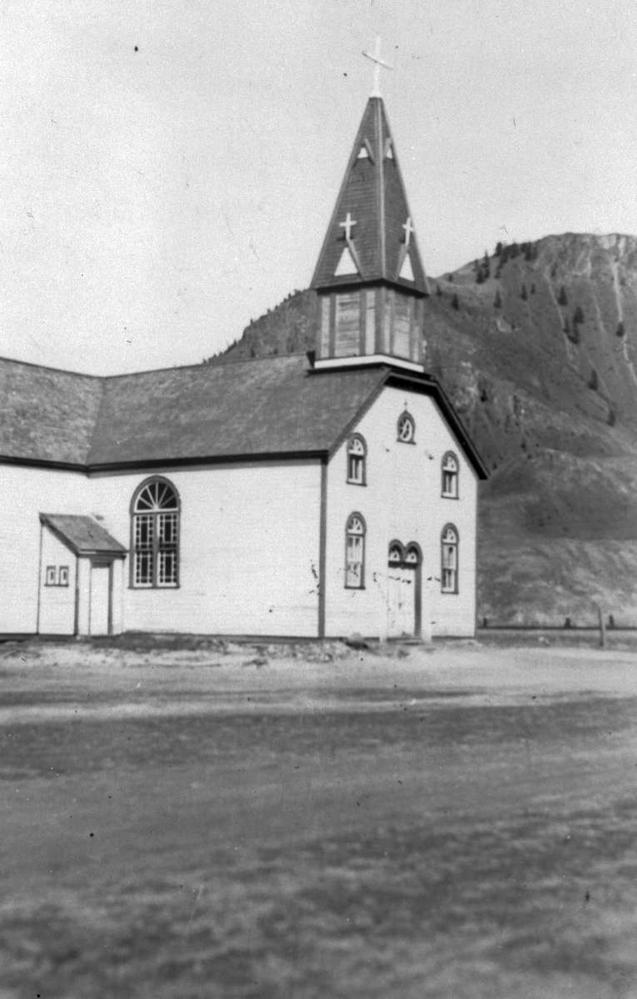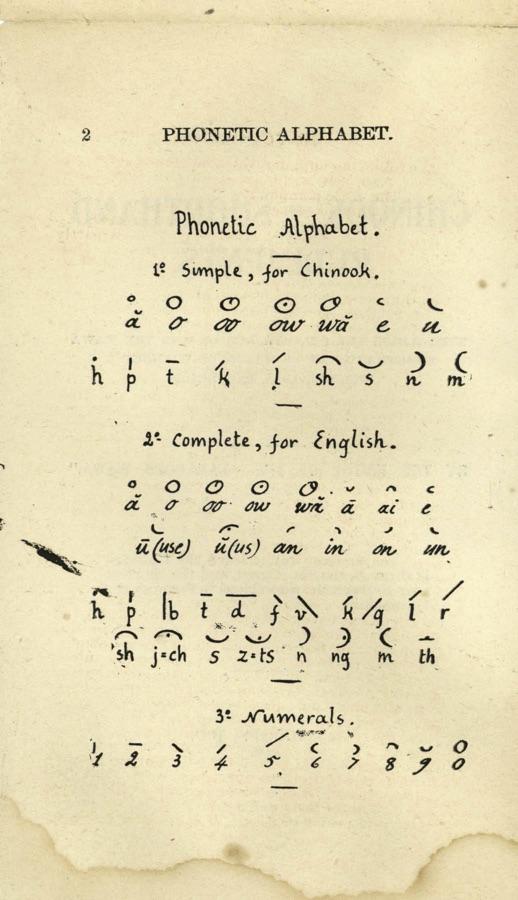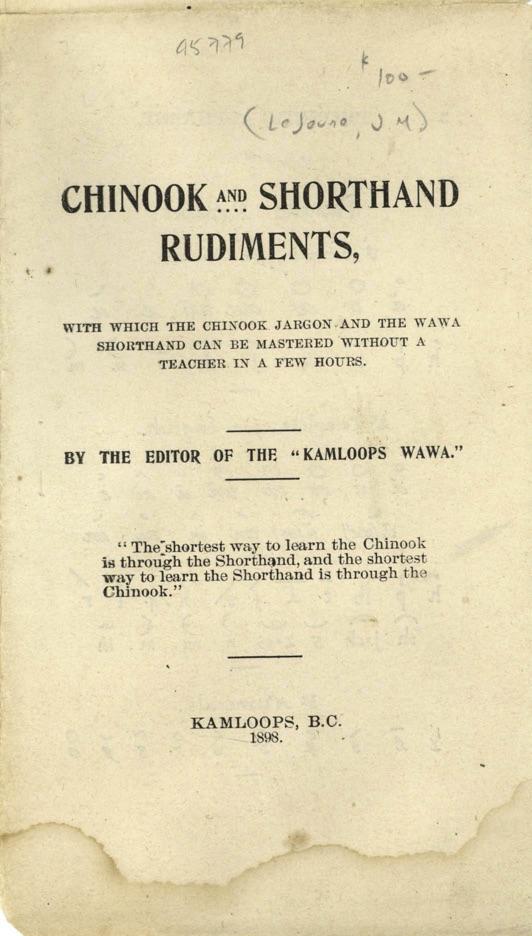Kamloops Wawa Published
The bilingual newspaper unites Indigenous communities around the province
Date: 1891
In 1879, a French Catholic missionary arrived in Kamloops, British Columbia. Father Jean-Marie Raphael Le Jeune, born in France’s westernmost region of Brittany in 1855, had arrived with the usual missionary hope of proselytizing the local Indigenous community. At the time, the Pacific Northwest was home to nearly a dozen language families, but to reach the widest audience Le Jeune turned to Chinook jargon.
Chinook jargon — different from the Chinook language — had emerged in the Pacific Northwest as the region’s lingua franca, uniting around 250,000 people from Hawaii to B.C. to Alaska. It was a pidgin language: a product of different cultures convening for trade. The bulk of the 500 or so words came from Chinook, but the rest came from a multitude of origins: Cree and Nootkan, as well as French, English, Spanish and Russian thanks to the fur trade and various gold rushes.
Chinook jargon was used in the early canneries, where Indigenous canners used it to communicate with Japanese and Chinese coworkers. It had also crept into official government proceedings. Criminal trials were held in Chinook jargon, including, notably, the trials of the chiefs in the Tsilhqot'in War.
But despite its widespread use, Le Jeune believed that the language had its limits — at least when it came to his hopes for mass conversion. He was worried that there weren’t many who could read it.
He had an idea. Prior to his arrival in North America, Le Jeune had studied Duployan shorthand, a system that had been developed back in France around 1860. The geometric stenography was based around the sounds of words, and resembled Aramaic. Le Jeune figured that its syllabic characters would be easier to teach to the local First Nations than the Roman alphabet. He set to work transcribing religious books and readings in this new way of writing Chinook Jargon, a writing system called Chinuk Pipa.
It caught on. In 1891, Le Jeune launched the Chinook Jargon newspaper, the Kamloops Wawa, or the “Kamloops Talk.” The paper was religious from the start, with hymns and religious texts published in three columns (Chinook jargon in the Roman alphabet, in shorthand, and then English). But thanks to Indigenous correspondents Le Jeune recruited, the paper also featured news from different Indigenous communities and, later, international news.
Over the years, the Kamloops Wawa drew the attention of ethnographers, linguists, and the clergy. It found audiences at the 1893 World’s Fair in Chicago, and its writers were recognized at international stenography exhibitions.
While the paper itself closed down in 1904, the presence of Chinook Jargon can still be felt throughout the Pacific Northwest. Its words, such as “Klahowya,” “Skookumchuck,” and “tillikum,” are casual greetings, places on maps and even a name for a famous orca.
Sources:
- Battell Lowman, Emma. "Mamook Kom’tax Chinuk Pipa/Learning to Write Chinook Jargon: Indigenous Peoples and Literacy Strategies in the South Central Interior of British Columbia in the Late Nineteenth Century." Historical Studies in Education, vol. 29, no. 1, Spring 2017.
- Blake, Lynn. "Jean-Marie Raphaël Le Jeune." Dictionary of Canadian Biography, vol. 15, University of Toronto/Université Laval, 2005, http://www.biographi.ca/en/bio/le_jeune_jean_marie_raphael_15E.html.
- Lang, George. Making Wawa. UBC Press, 2008.
- Pilling, James Constantine. Bibliography of the Chinookan Languages (Including the Chinook Jargon). Smithsonian, 1893.
- Tsang, Henry. "Kamloops Wawa." Henrytsang.Ca, https://henrytsang.ca/kamloops-wawa/. Accessed 25 May 2021.





